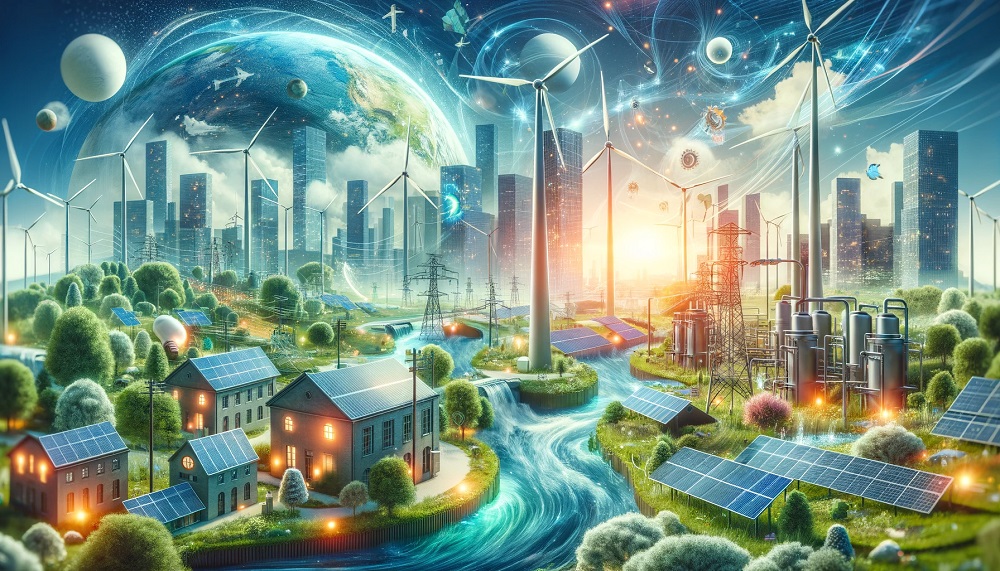
Transitioning to green and clean energy sources has become an urgent and essential step towards building a sustainable future. It not only helps combat climate change but also ensures the well-being of our planet and future generations. In this curated guide, we explore the power of green and clean energy initiatives, highlighting successful case studies, practical steps to embrace reliable energy solutions, and addressing common concerns and challenges.
Understanding the Green and Clean Energy Landscape
Before we dive into the transformative impact of green energy initiatives, let’s understand the distinction between green and clean energy. Green energy refers to renewable energy sources that have minimal environmental impact and produce low or zero greenhouse gas emissions. On the other hand, clean energy encompasses both renewable energy sources and nuclear energy, which is considered relatively cleaner than fossil fuels.
Renewable energy sources have gained significant attention due to their sustainable nature and potential for large-scale implementation. Let’s take a closer look at some of the most promising renewable energy sources:
Solar Energy
Solar energy harnesses the power of the sun to generate electricity or heat. Through the use of solar panels, this abundant and inexhaustible energy source can be converted into usable electricity. Solar energy has the potential to meet a significant portion of our global energy needs and is already being successfully implemented in various parts of the world.
Wind Energy
Wind energy utilizes the power of wind to drive turbines, generating electricity. With advancements in wind turbine technology and increased investment in wind farms, wind energy has become a leading player in the renewable energy sector. Countries like Denmark have achieved remarkable success in harnessing wind power, shaping their energy landscape and reducing reliance on fossil fuels.
Geothermal Energy
Geothermal energy harnesses the natural heat produced by the Earth’s core to generate electricity or heat. Countries like Iceland, with abundant geothermal resources, have created sustainable and resilient energy systems that rely heavily on geothermal power. This form of renewable energy not only reduces greenhouse gas emissions but also offers economic opportunities.
Hydroelectric Energy
Hydroelectric energy utilizes the power of flowing or falling water to generate electricity. By building dams, rivers and water bodies are transformed into powerful energy sources. Large-scale hydroelectric projects have been implemented in many countries, providing clean and reliable energy while minimizing ecological disruptions.
Bioenergy
Bioenergy is derived from organic matter, such as biomass and biofuels. It provides an alternative to fossil fuels by utilizing organic waste, agricultural byproducts, and dedicated energy crops. Bioenergy can be converted into various forms of energy, such as electricity, heat, and even transportation fuels.
Spotlighting Successful Green Energy Initiatives
Real-world examples of successful green energy initiatives inspire and showcase the potential of renewable energy sources. Let’s explore a few remarkable cases:
Wind Power Revolution in Denmark
Denmark’s relentless pursuit of wind power has resulted in a remarkable transformation of their energy sector. The country has become a global leader in wind energy production, with wind turbines dotting its landscape. This wind power revolution has enabled Denmark to generate a significant portion of its electricity from renewable sources, reducing carbon emissions and positioning themselves as pioneers in clean energy.
Embracing Geothermal Energy in Iceland
Iceland, a country blessed with geothermal energy potential, has embraced this resource to its advantage. Geothermal power plants utilize the country’s abundant underground heat to generate electricity and provide heating for homes and businesses. Iceland’s success story showcases the power of utilizing local resources, reducing dependence on fossil fuels, and fostering a sustainable future
Practical Steps towards Embracing Green and Clean Energy
While large-scale green energy initiatives are essential, we can all play a part in transitioning towards a sustainable future. Here are practical steps that individuals, communities, and governments can take:
At the Personal Level
Adopt energy-efficient practices in your homes and workplaces, such as using LED light bulbs, optimizing insulation, and reducing energy consumption. Consider investing in solar panels or other renewable energy technologies to generate your own green energy. Small changes, like adjusting your thermostat and reducing water usage, can collectively make a significant difference.
At the Community Level
Support local green energy initiatives and cooperatives by actively participating or investing in community-owned renewable projects. Advocate for eco-friendly transportation options and infrastructure developments, such as bike lanes and electric vehicle charging stations. Promote and participate in awareness campaigns to educate others about the benefits of sustainable practices.
At the Government and Policy Level
Government-backed policies and incentives play a critical role in driving renewable energy adoption. Encourage policymakers to implement incentives, subsidies, and tax breaks for green energy adoption. Set renewable energy targets and collaborate with international organizations to promote global green initiatives. Support research and development for cleaner technologies and foster a favorable environment for green businesses to thrive.
Overcoming Challenges and Addressing Concerns
Transitioning to clean energy initiatives is not without its challenges. However, awareness and proactive measures can help overcome these hurdles:
Economic and Financial Considerations
Initial costs of implementing renewable energy systems may deter some individuals or businesses. However, it’s important to consider the long-term benefits, including reduced energy costs, job creation, and improved environmental conditions. Governments can further mitigate financial burdens by offering financial incentives, grants, and low-interest loans for renewable energy projects.
Technological Advancements and Scaling Up
Continued investment in research and development is crucial for driving technological advancements and improving energy efficiency. Governments, private entities, and research institutions need to collaborate and allocate resources to enhance renewable energy technologies. This will lead to cost reduction, increased efficiency, and scalability, making green energy more accessible and widespread.
Transitioning from Fossil Fuel-Dependent Industries
The shift to renewable energy also requires transitioning from traditional fossil fuel-dependent industries. This can pose challenges for economies and communities heavily reliant on these industries. Governments must support affected regions through reskilling programs, job training initiatives, and strategically supporting new industries that complement green energy objectives. By proactively addressing the concerns of affected communities, a just transition towards a greener future can be achieved.
Addressing Common Misconceptions and Promoting Public Education
Misinformation and misconceptions can hinder progress towards embracing green and clean energy. It’s essential to address these concerns through factual communication and public education campaigns. Sharing success stories and showcasing the economic, environmental, and social benefits of renewable energy will help dispel myths and inspire individuals and communities to embrace sustainable practices.
Paving the Way for a Greener Tomorrow
As we conclude this curated guide, let’s reflect on the power of green and clean energy initiatives, and the role each one of us can play in building a greener tomorrow. By adopting renewable energy technologies, supporting green initiatives, and advocating for sustainable policies, we can collectively create a brighter and more sustainable future for ourselves and generations to come.
Remember, the time for change is now, and together, we can power the future with green energy, for a greener tomorrow!





